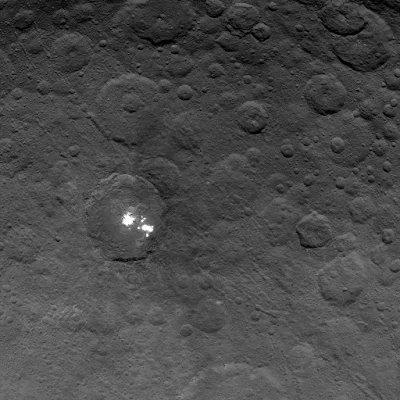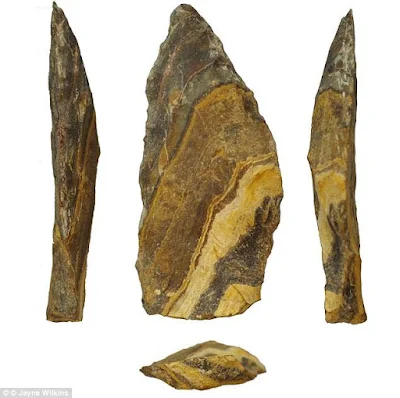Κοντινή
λήψη των λαμπερών κηλίδων στον κρατήρα της Δήμητρας. The brightest spots
on Ceres. The largest is about four miles (seven kilometers) across. While a
picture is worth a thousand words, “wow” might summarize this picture pretty
well. The famous bright spots at the bottom of Ceres' Occator crater appear to
be sublimating material into space, creating a localized atmosphere within the
walls of the 57-mile-wide (92 kilometers) hole in the ground, new observations
by NASA's Dawn spacecraft suggest. Image credit:
NASA/JPL-Caltech/UCLA/MPS/DLR/IDA.
Από
τον περασμένο Μάρτιο το διαστημικό σκάφος Dawn βρίσκεται στη Δήμητρα, έναν πλανήτη νάνο
του ηλιακού μας συστήματος, και την εξερευνά. Όταν πλησίασε το «Dawn» στη Δήμητρα εντόπισε δύο ασυνήθιστα
λαμπερές κηλίδες μέσα στη λεκάνη ενός κρατήρα, διαμέτρου 98 χλμ.
There is bright
material easily visible inside and around the crater near the upper right. Did
the powerful impact that excavated the crater deposit bright material that it
brought from elsewhere in space, excavate bright material from underground or
create the conditions that subsequently caused some material to become bright?
The reason for the greater reflectivity is not yet known. Image credit:
NASA/JPL-Caltech/UCLA/MPS/DLR/IDA.
Η
φύση τους παραμένει αδιευκρίνιστη, ωστόσο οι ερευνητές εικάζουν ότι πρόκειται
για πάγο ή άλατα που ήρθαν στην επιφάνεια λόγω κάποιας πρόσκρουσης. Άλλοι
επιστήμονες εικάζουν ότι πιθανώς πρόκειται για ένα ηφαίστειο που αντί για
πυρακτωμένα υλικά εκτοξεύει νερό.
The investigation
into the dwarf planet Ceres' mysterious bright spots has taken an intriguing
new twist. The famous bright spots at the bottom of Ceres' Occator crater
appear to be sublimating material into space, creating a localized atmosphere
within the walls of the 57-mile-wide (92 kilometers) hole in the ground, new
observations by NASA's Dawn spacecraft suggest. "If you look at a glancing angle, you can see what seems to be haze, and
it comes back in a regular pattern," Dawn principal investigator
Christopher Russell, of UCLA, said during a presentation.
Ερευνητές
του Πανεπιστημίου της Καλιφόρνιας μελετώντας τα δεδομένα που στέλνει το Dawn κατέληξαν στο συμπέρασμα ότι στον κρατήρα
που ονομάστηκε Occator
δημιουργείται πολύ συχνά μια ομίχλη. Πρόκειται για ένα τοπικό ατμοσφαιρικό
φαινόμενο στον πλανήτη.
Dawn has also
spotted numerous long, linear features whose cause is unknown, as well as one
big mountain that mission team members have dubbed "The Pyramid."
This massif, which is about 3 miles (5 km) tall and 19 miles (30 km) wide,
features a flat top and strangely streaked flanks, Russell said. Credit:
NASA/JPL-Caltech/UCLA/MPS/DLR/IDA.
Αν
ο ισχυρισμός των ερευνητών επιβεβαιωθεί, ταυτόχρονα λύνεται και το μυστήριο της
ταυτότητας των λαμπερών κηλίδων, αφού η ύπαρξη τέτοιας ατμοσφαιρικής
δραστηριότητας μπορεί να συνδέεται με την παρουσία πάγου και όχι αλάτων.













